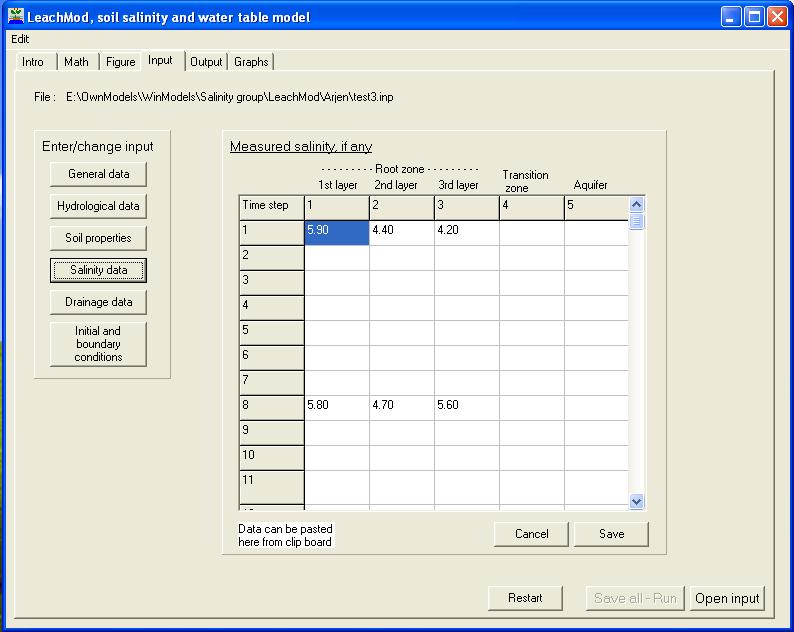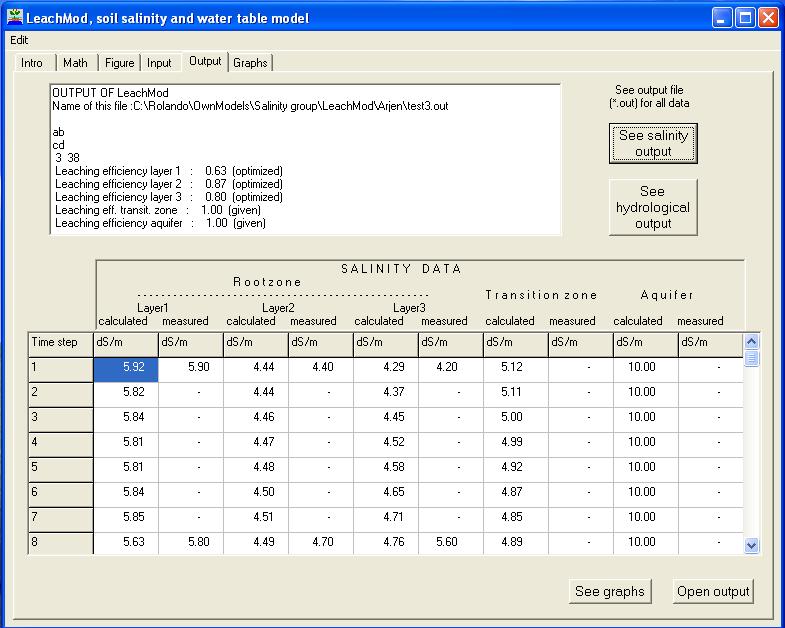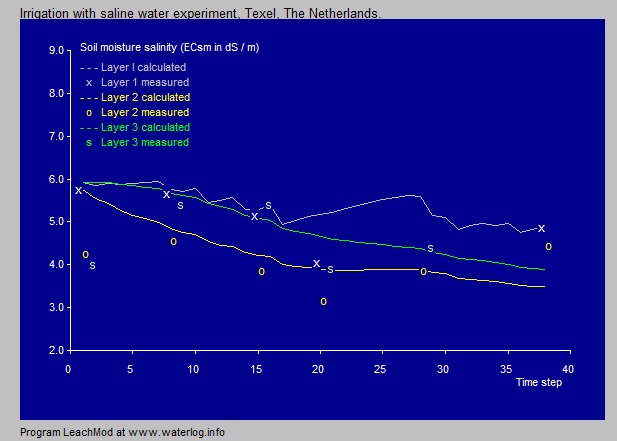|
Summary: LeachMod is designed to simulate the depth of the water table and the soil salinity in irrigated areas with a time step as selected by the user (from 1 day to 1 year). The program uses small time steps in its calculations anyway for a better accuracy. In case of a leaching experiment with measured soil salinities, LeachMod can automatically optimize the leaching efficiency by minimizing the sum of the squares of the differences between measured and simulated salinities. The root zone can consist of 1, 2, or 3 layers. LeachMod allows the introduction of a subsurface drainage system in a transition zone between root zone and aquifer, and subsequently it determines the drain discharge. When the irrigation/rainfall is scarce and the water table is shallow, LeachMod will calculate the capillary rise and reduce the potential evapotranspiration to an actual evapotranspiration that, although the reduction may diminish by the capillary rise. LeachMod can also take into account upward seepage from the aquifer or downward flow into it. The latter flow is also called natural subsurface drainage. |
|
Details: This model is somewhat similar to SaltCalc. On the one hand the water management options are fewer (e.g. re-use of drainage or well water for irrigation do not feature here), but the model is more modern in the sense that the variable input for each time step is given in a table so that the calculations over all the time steps are done in one go. Moreover, by inserting the observed values of soil salinity in the data table, the model optimizes the leaching efficiency of the soil automatically. On 11 July 2015 LeachMod was updated to include more rigorous data checks. On 7 April 2016 the program was updated again and the initial soil salinity can now be be introduced for the various rootzone layers separately instead of one value for the whole rootzone. On 3 march 2017, the distribution of the evaporation over the various rootzone layers was refined, leading to a small change in the salt distribution over these layers. |
|
Start: The program starts clicking on LeachMod.Exe. More information is given in the program itself. |
|
Further reading A description of the principles of water and salt balances in the soil on which LeachMod is based is to be found on this balances page An article on the use of LeachMod for the reclamation of a saline heavy clay soil (vertisol) by rice cropping was published in the International Journal of Environmental Science, see this website. Another paper has beed added to this website as the: Khorezm case . Experiences with LeachMod can be further inspected in this conference paper . |
Download
LeachMod

Experiences: For improvement, I am interested to learn about your experiences with LeachMod. For this there is a contact form.



